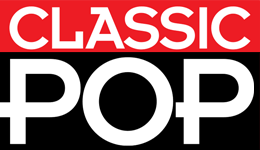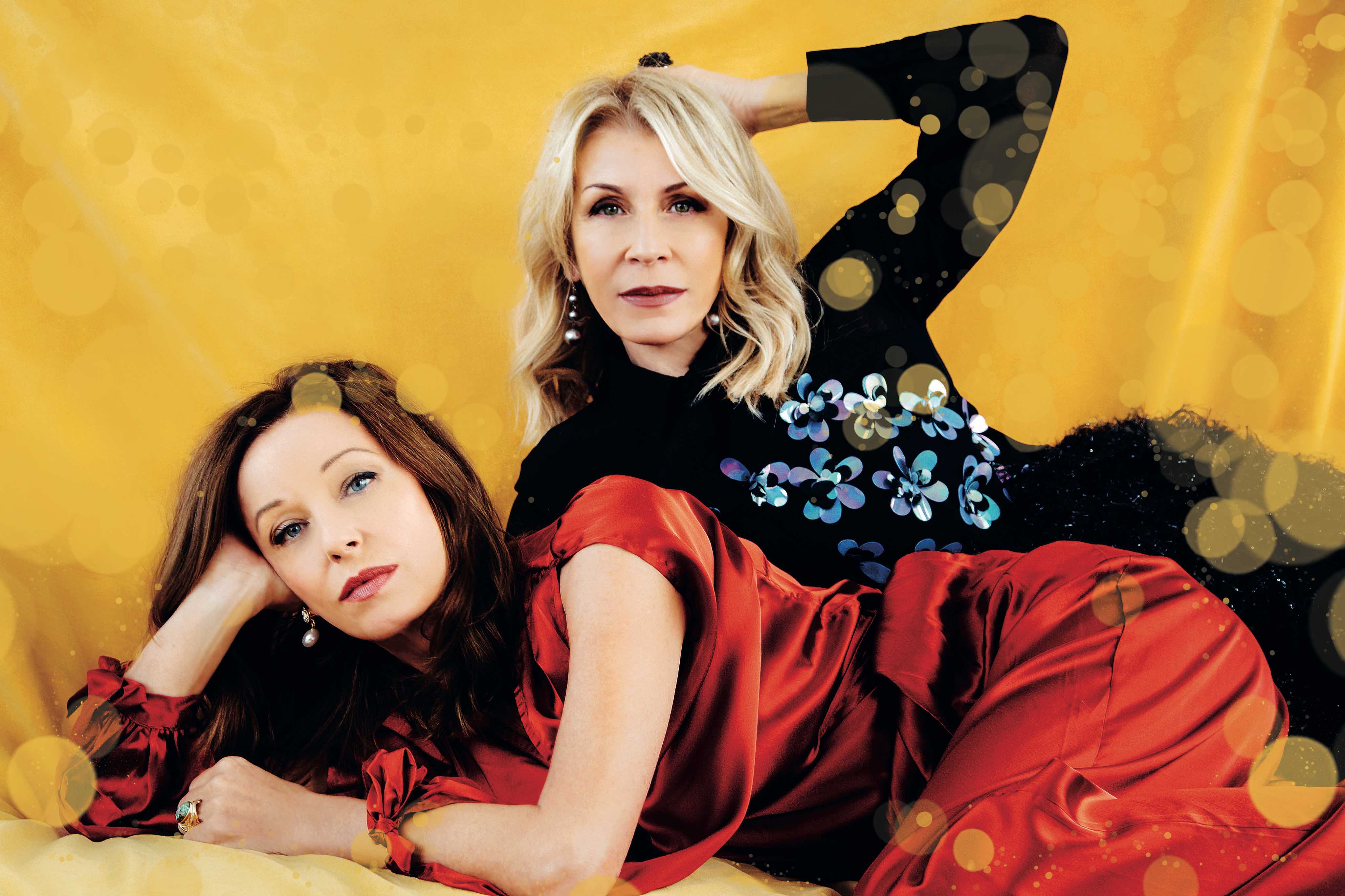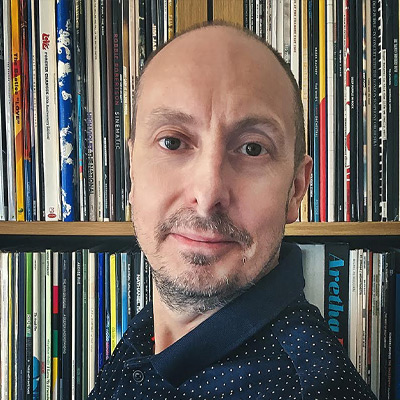Normal service has been resumed. After their one-time only reunion tour with Siobhan Fahey, Bananarama are back with their first studio album in 10 years. Sara Dallin and Keren Woodward talk about pop’s uplifting power, Patti Smith and ra-ra skirt-wearing trauma…
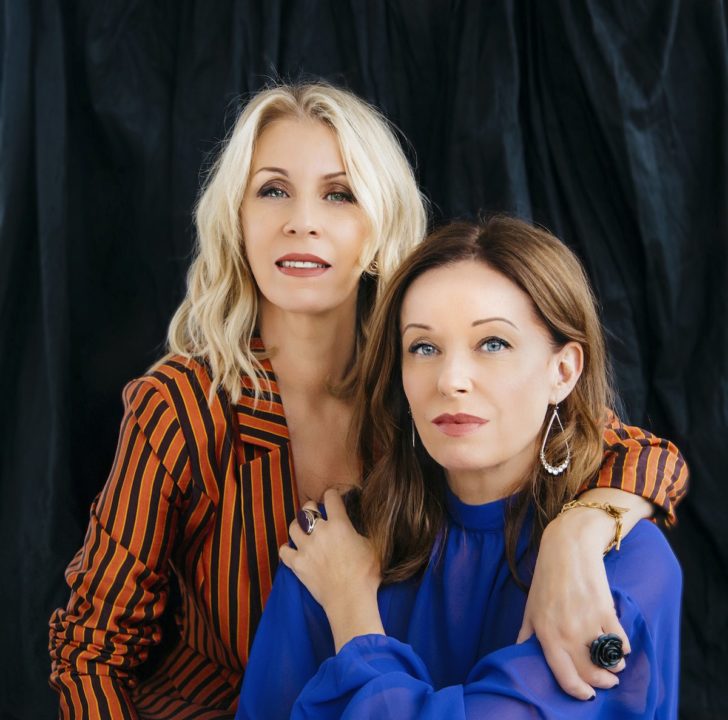 Bananarama are jet-lagged but exultant. Keren Woodward and Sara Dallin have just returned from a storming show in San Diego and are about to endure a long-haul marathon flight to Australia for a string of gigs Down Under. In the meantime, there’s also the small matter of a video shoot to crowbar in.
Bananarama are jet-lagged but exultant. Keren Woodward and Sara Dallin have just returned from a storming show in San Diego and are about to endure a long-haul marathon flight to Australia for a string of gigs Down Under. In the meantime, there’s also the small matter of a video shoot to crowbar in.
If they thought their return as a duo would be dialled down a little from the headline-grabbing exploits of their recent reunion with Siobhan Fahey, then they’ll have to think again.
With their first studio album in a decade about to make its way blinking into the pop sunlight, we meet in the chic environs of a French brasserie in Soho’s Old Compton Street, just a stone’s throw away from the G.A.Y. club where they played an historic one-off reunion show with Siobhan back in 2002. Amid the clinking glasses and cappuccino slurps of the West End’s assembled brunchers, the pair are friendly but businesslike; a no-nonsense approach that’s seen them through almost 40 years on pop’s frontline.
They’ve already moved on from the almost overwhelming response to their Original Line Up Tour, polishing off new knowingly-titled duo album In Stereo in its lustrous afterglow. It’s a reassertion of the pair’s strengths and crystallisation of the latter-era sound of Drama and Viva, although Sara is quick to point out that writing a box-ticking fan-pleasing album was never on the agenda. “If you do that you get it wrong,” she notes firmly. “You have to do what comes naturally. I can’t write to order in a certain style. Essentially, we write pure pop songs. Songs that mean something to us.
“Because of our harmonies and the way we sing, the album’s instantly identifiable as us. It was a very easy record to make – very, very pop, very Blondie-ish. It’s also very electro-pop, which we love. Those two styles blend together really well.”
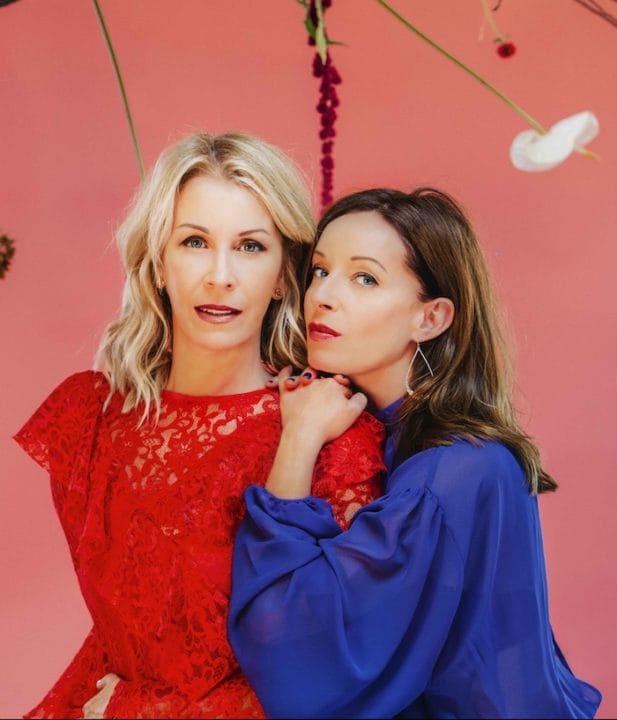
“We don’t go to clubs so much now obviously,” adds Sara by way of explanation. “But if we’re abroad then there’s that dance element around. The influence on that song wasn’t explicitly an Ibiza one but Ian picks up on that type of music and made a backing track for us. We just performed it live in the States as a taster for the new album.”
It’s been many fans’ first experience of In Stereo and was initially made available as a pre-order download. “We didn’t want people’s first experience of the album to be on an iPhone or on YouTube,” adds Sara.
Adventures In Stereo
The completion of In Stereo was a stop-start affair. Recording had been well underway before sessions were put on the backburner, giving way to the surprise reunion tour with Siobhan.
“Writing with Ian is kind of an ongoing process,” explains Sara. “You never really know when anything’s going to be released. We did an EP [Now Or Never] in 2012, I think, and a Christmas single, bits and pieces. This time, though, it felt that it was a really great time to release the album, particularly following the [reunion] tour. Obviously we had stuff already written.”
“We added a few extras just to complete it but we had quite a lot of songs finished with Ian already,” adds Keren who is also pleased that the duo are now more in control of their own destiny than ever before. “We decided for once in our lives that we’d like to own the album and do it all ourselves,” she explains. ”With our back catalogue, apart from a couple of albums, which we do now own, the record company paid for the recording and they own them. It’s nice to have control now.”
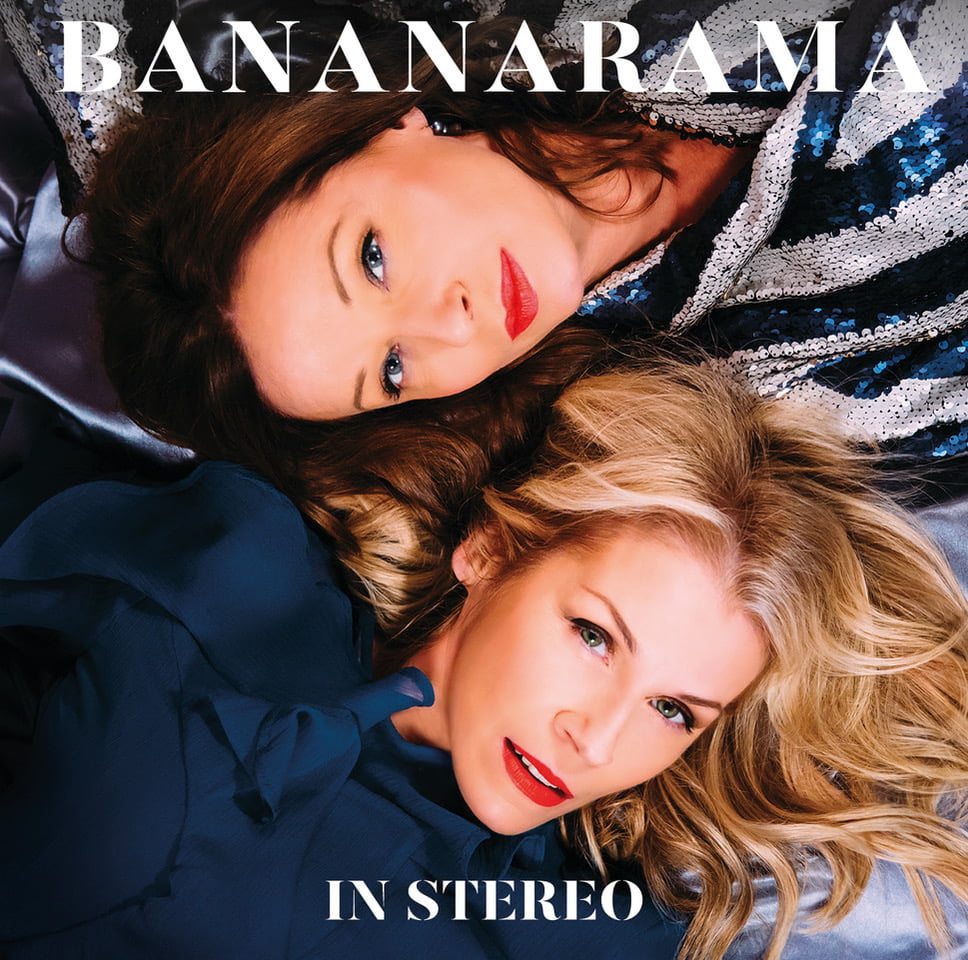
Keren explains that although the format of the shows has yet to be fine-tuned, they’re keen to tinker with the traditional gig concept: “We’ll do quite a few songs from the new album at the Q&A, though we’re still working out exactly what the format of the shows will be. We might mix in questions with the songs, almost like an ‘Audience With’-style show. That’s kinda what we did in San Diego the other night. It just seemed very natural to stop and chat with the audience.
“At the reunion shows with Siobhan, we had a little bit of banter between us. If you’re in the right sized venue, you can have a nice rapport with the audience, which you can’t do when you’re playing the festival-type events where the front row is so far away.
“That said, I quite enjoy winning people over at festivals, because we always manage to do it. What we get right across the board is people saying, ‘I forgot you had all of those hits!’
“For the April shows we won’t just concentrate on the obvious hits. We’re taking a new band with us on tour as our regular guys aren’t available, so it’s impossible to rehearse every hit and then every song you might want to do, too. It would take forever, so we’ll hone it down. It’s the first time we’ve had a whole new band with us for many years now, so that’s exciting.”
The Grand Tour
As a live act, Bananarama’s currency has never been greater. Their Original Line Up Tour shows – 25 in the UK, five in the US, a few in Europe and a clutch of festivals – navigated that fine line between celebrating their back catalogue but not dipping into cloying nostalgia. Key to its charm, too, was that its big league production values didn’t swamp the DIY informal charms of the trio. When Classic Pop caught them at their almost-hometown show in Bristol, it felt – with absolutely no insult intended – like a massive hen night piss-up.
“We didn’t want it to be over-polished with loads of dance routines,” says Sara, “That’s not really our thing. We’re very ‘take us as you find us’. There is no rulebook as to how you should perform.
“Apart from our huge gay following we’ve always had loads of female fans. Even when we were much younger, girls loved it because there were so few women around for them to look up to. I think that’s why we were important to them.
“Siobhan was with us for six years but she never experienced touring while in the band. We toured after she left, but we didn’t perform with a live band with her at all. It wasn’t the done thing back then. Then we went on a world tour with Jacquie [O’Sullivan]. We didn’t do it the first time around because it was more the age of video.”
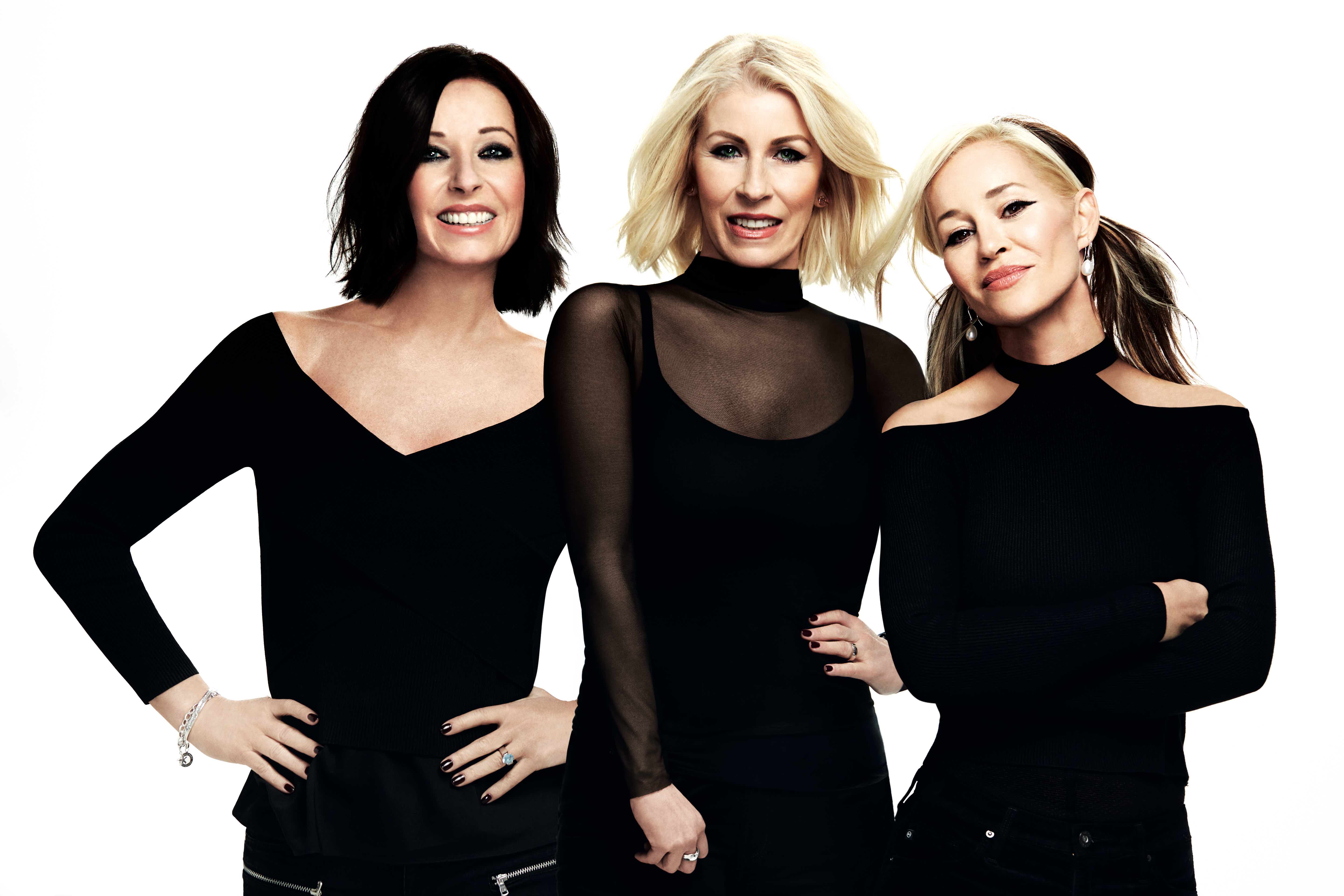
Reaction across the board was exceptional, and both Keren and Sara were overwhelmed at the response to the trio shows. The latter explains: “We play a lot of live shows and people always go crazy, there’s always an audience there. But this was going to be special because people had never seen the three of us together and probably won’t again, so it really was an amazing one-off experience.
”The love and the comments were just astonishing. The show was fantastic. A lot of money went into it so it looked great. It was nostalgic and it was fun. It was everything you could want for a night out I think.“ Sara pauses. “Well, maybe not everything!” she laughs with a nudge and a wink.
New material was floated in the media but being in the centre of the hurricane left no time for writing or recording. Keren’s quick to point out that fresh trio material was essentially a non-starter: “There wasn’t time really but we’d already been working on stuff [as a duo]. That was a one-off tour and we’d almost finished the album. It was a good time to do the tour and the right time for Siobhan, too. She loved it, we all did. Our feet didn’t really touch the ground. We didn’t have enough time to record another album. We’d have had to take another six months or a year out. In the future, who knows, there might be a one-off gig but I can’t see it at this point in time.”
“Bananarama has been almost three decades as a duo so for us it’s very natural,“ adds Sara. “But revisiting it was a brilliant experience, we had a great time, we love Siobhan to death and it was what it was. A lot of groups do the ‘last ever tour’ thing but that’s not us.”
Once Upon A Time In The West
There’s a winning lack of formality about Keren and Sara, both onstage and off. Slick choreographed dance routines have never been their bag, borne from the DIY ethic of the punk scene from which they sprang. It’s been a long journey, though, from the squat culture of their earliest days to the slick and refined electro-pop of the current incarnation.
“We just did what came naturally,” explains Keren with a shrug about their first steps as a band. “We didn’t go to stage school and didn’t have stylists. We weren’t schooled in how to behave in front of the television cameras, it was all just very new and exciting. I know it’s amateur, but how else would it be when you were just 19?”
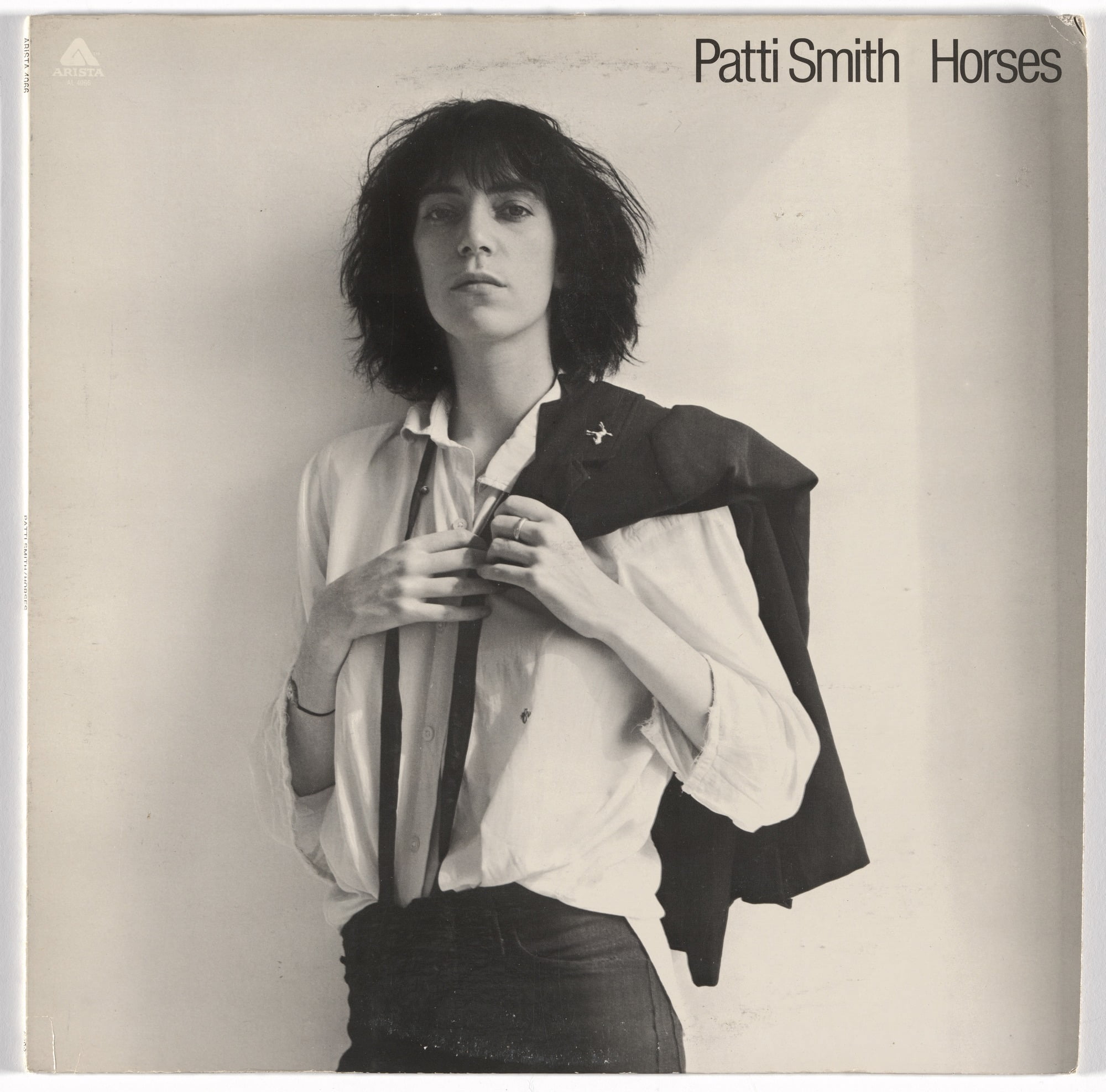
Despite growing up amid Bristol’s burgeoning punk scene, the West Country city held little attraction for the teenage Keren and Sara who were desperate to escape for the bright lights of London as soon as they could. They caught The Police and The Clash in their home city but the capital soon came calling… “We were still quite punky when we left home,” adds Keren. “We always played music, though. We made a lot of tapes of ourselves singing – comedy tapes, made-up plays. That’s what we did in our school holidays but you never think you’ll be able to make a career out of it. I had no idea what I wanted to do. I just wanted to move to London. I was sick of school and didn’t want to go to university. I phoned up the BBC thinking I might get into television. It sounded exciting, but it didn’t pan out!”
Sara, meanwhile, did have a plan and enrolled at the London College Of Fashion where she studied fashion journalism. It was where she also met Siobhan Fahey. Dallin takes up the story: “I was 18, we lived in the YWCA, and we started going to all these different clubs. Then we met Paul Cook [from the Sex Pistols] by chance and he came to our hostel. This was like 1980 or ’81. We became really good friends with him so when they closed our place down he asked us if we’d like to live above his rehearsal room, which doubled up as Malcolm McLaren’s office.”
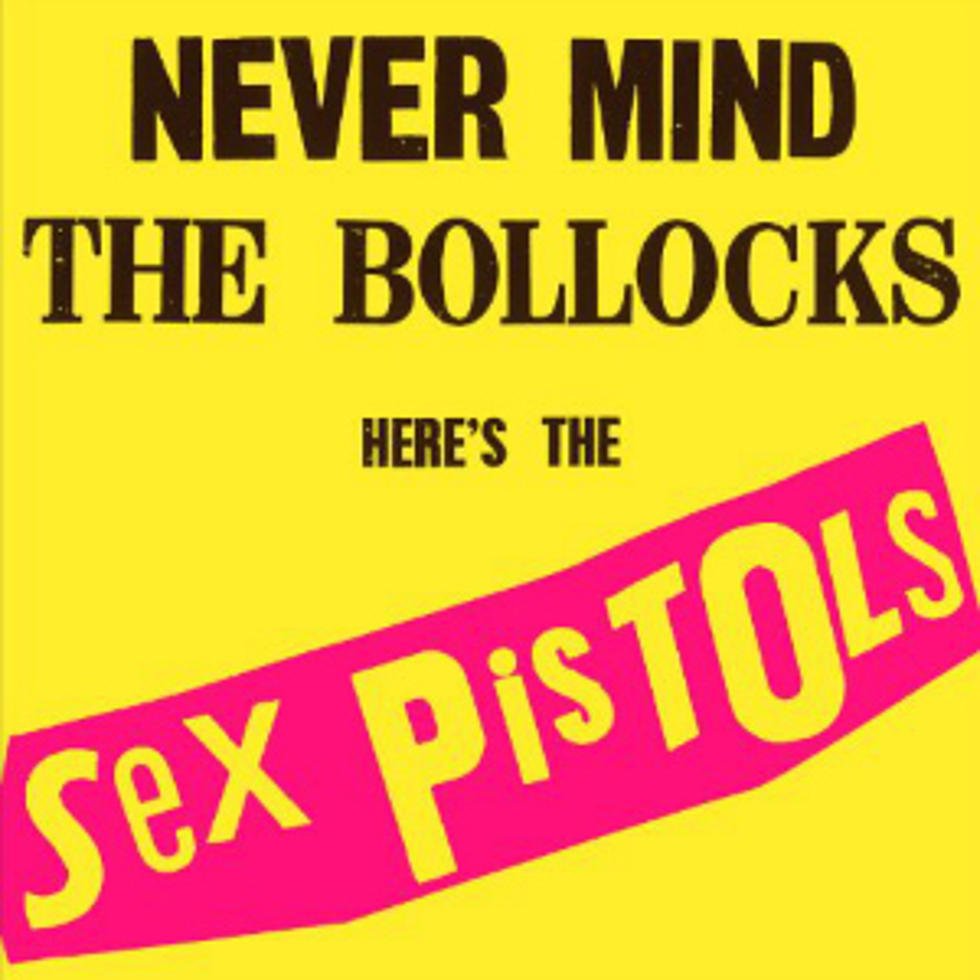
“Our beginnings as a trio were quite fortuitous. Paul didn’t put the group together, but the fact that Keren and I were going to the rehearsal rooms and staying there meant that we were constantly meeting all these musicians. We used to go to a club called Music Machine, which is now KOKO; we just met loads of people through Paul. Siobhan wasn’t really part of our circle of friends at that point, she was dating someone from Stiff Little Fingers. They lived in Wardour Street. It’s hard to remember when it all came together, I dunno, it just sorta happened.”
And sorta happen it did. After Siobhan joined and they completed the final part of the jigsaw puzzle, the trio sang backing vocals for the likes of Iggy Pop and The Style Council, before releasing the experimental Burundi beat-influenced Aie A Mwana, Swahili lyrics ‘n all. But their biggest break came when former Specials frontman Terry Hall spotted them in fashion bible The Face and invited them to feature on Fun Boy Three’s debut album. The girls contributed to four tracks including the hit singles It Ain’t What You Do (It’s The Way That You Do It) and Really Saying Something. Sheepishly glowering from behind vast swathes of fringe, their collective star was on the rise.
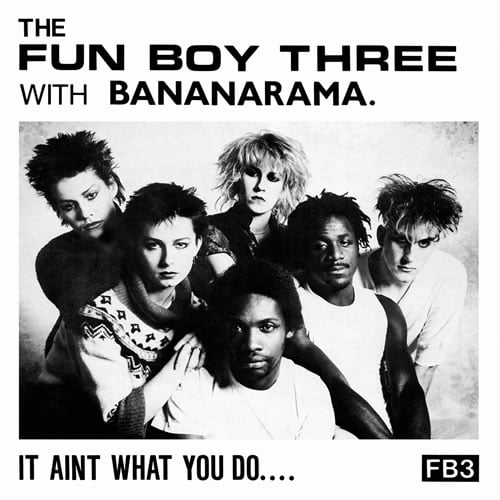
There’s clearly a lot of affection from Woodward and Dallin towards Hall; if it wasn’t for him taking a gamble on them back in the day, the Bananarama story may never have progressed from its early indie beginnings.
Far from exuding rock star charisma, Keren recalls that the assembled musicians all seemed to lack self-confidence. “Terry had the same sense of humour as us but was very shy. All of our conversations were conducted from behind masses of hair, then you’d get the odd quip. Once we became friends with them, though, we had such a laugh. They’d say, ‘OK. Keren you play the keyboards on this bit, Siobhan and Sara you play maracas. We just joined in on their tracks – we must have done four or five in the end. But that was a good learning experience for us where we gained confidence in the studio. They included us in everything that they were doing.”
“They taught us that you don’t have to be trained or to have a huge background in music, it really was that DIY sensibility of people like The Slits,” points out Sara. “It’s the strangest thing to be a teenager where you’ve only ever watched Top Of The Pops on telly, then the next minute we’re all on it. I didn’t know what the red or green lights meant – which cameras to look at and all that kinda stuff. The early ones are just unbearable to watch!
“Terry also had the idea for us to wear those awful tracksuit ra-ra skirts that I absolutely hated with a passion. We came from that edgy scene of Portobello Road-style outfits with the backcombed hair. It just wasn’t my thing AT ALL!”
Hi-Nrg suppliers
You get the sense that Bananarama’s pure pop aesthetic is most wholly embraced by Keren – especially the Stock Aitken and Waterman years. Sara’s love of Patti Smith and Debbie Harry combined with Siobhan’s more envelope-pushing wishes for the band propelled them into more lyrically mature territory for their eponymous second album.
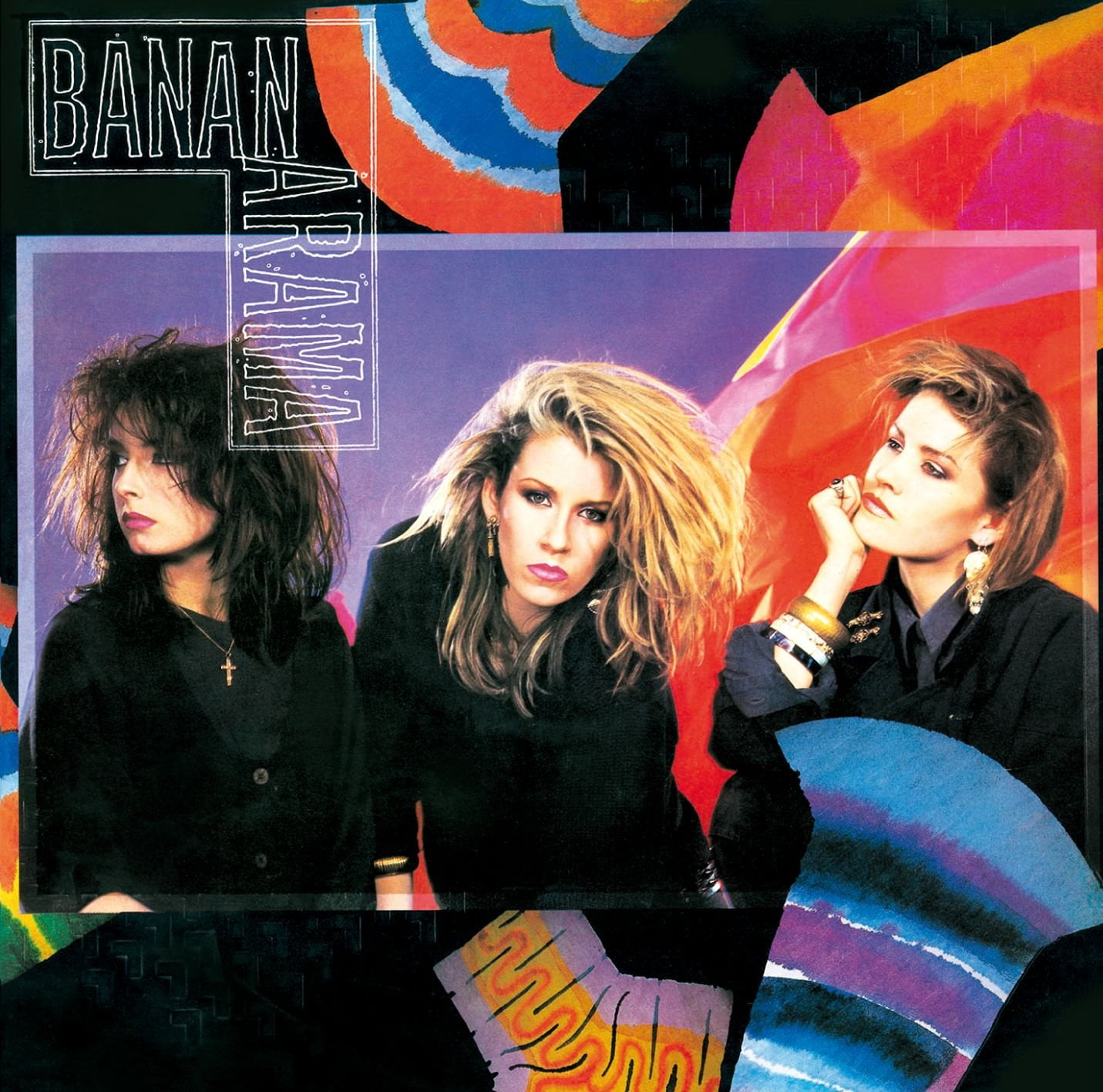
“I don’t think we realised at first how the music industry would pigeonhole us,” Sara continues. “We had no knowledge of the press and how a male-dominated industry would treat us. I just grew up thinking that I could do anything I want; I was writing my own songs, it was all great.
“In terms of the people that we befriended over the years, first we knew Paul Cook, then we knew The Cure, then The Prodigy and Oasis. It wasn’t like we needed to know them, we just gravitated towards each other with the same attitude. Sometimes people in the industry just saw three girls in ra-ra skirts and thought, ‘There’s no credibility there.’”
“It took a while for us to realise how people perceived us,” adds Keren. “You then attempt to get across the fact you’re not like that, then you think, ‘Oh God, who cares?’”
Bananarama’s evolution into titans of pure pop seems wholly natural. They’ve paid their dues as icons of quirky DIY punk pop, now they’ve happily embraced something a little more refined.
“We started with a real indie phase, some really unusual records and collaborations – and we loved that sound. But we heard Hi-NRG at gay clubs and absolutely loved it. I adored the Wow! album. There’s some brilliant pop songs on it,” adds Dallin to counter her original punk influences.
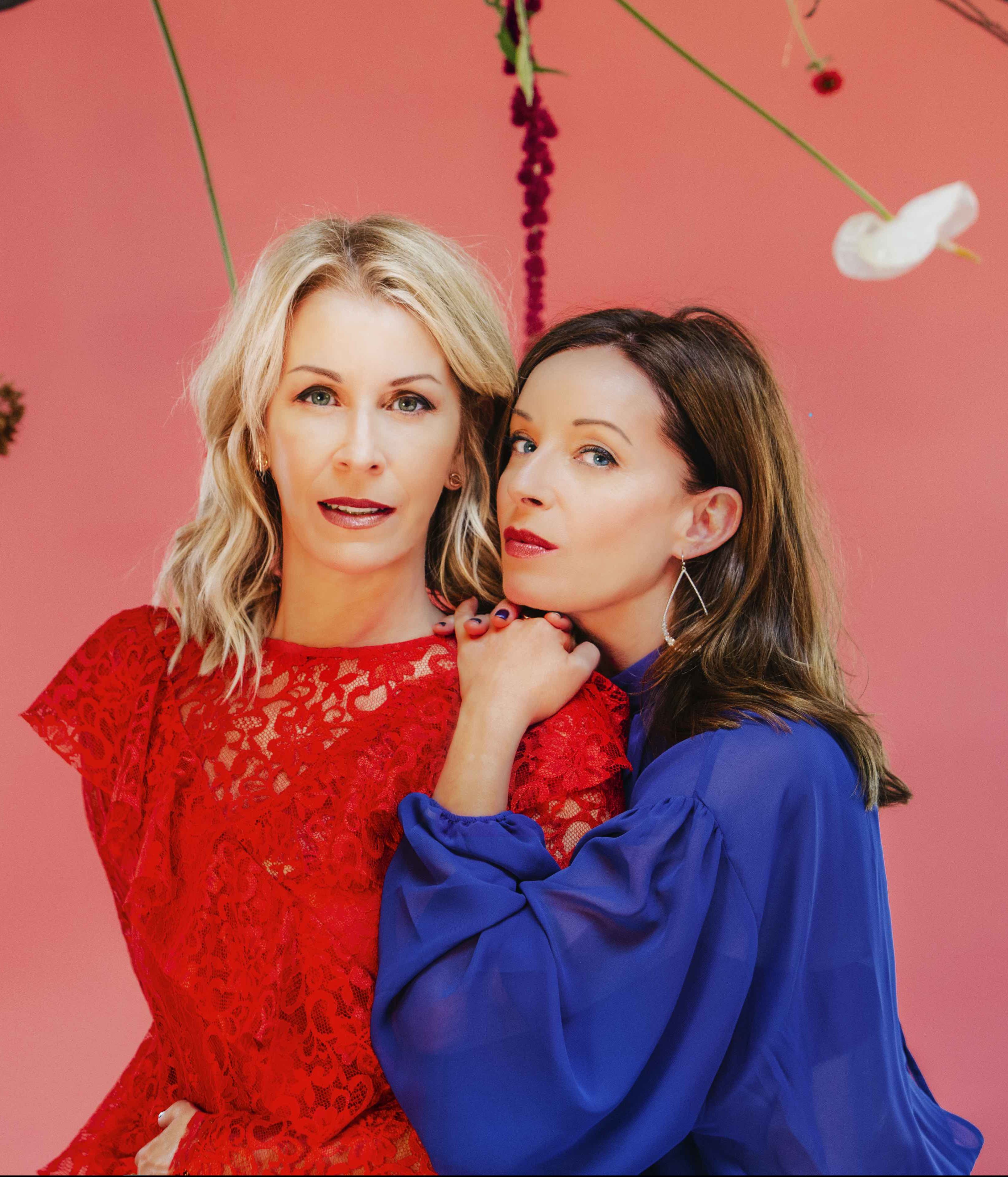
“When we did things like I Heard A Rumour and Love In The First Degree, they’re just amazingly uplifting pop songs. I had no qualms about doing those kind of pop songs and still don’t.”
Steve Harnell
GET YOUR COPY OF IN STEREO HERE NOW
*this article contains affiliate links
Classic Pop may earn commission from the links on this page, but we only feature products we think you will enjoy.
